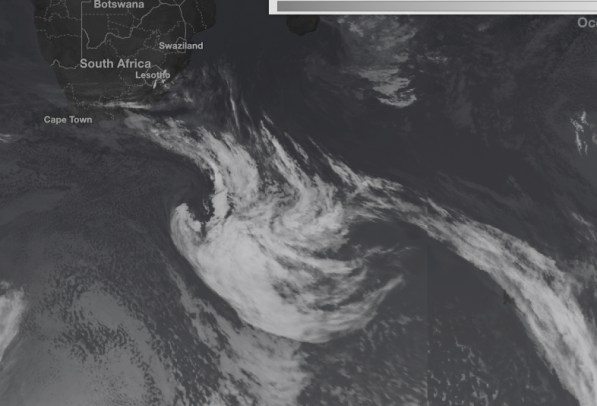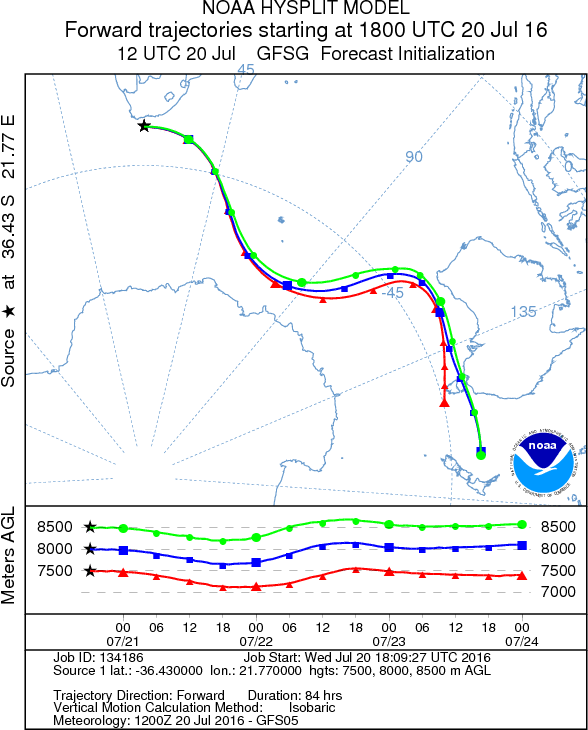Past The Cape of Good Hope. Morton balloon is over Indian ocean
Fedor is on the final leg home but relaxing at this stage is not an option. The morning started with significant valving of helium as it is heated by the sun. This has been necessary for the last few days as fuel is consumed and the system becomes lighter. Without losing some of the helium the balloon would climb to a height which would be unsafe for the pilot even though he is breathing oxygen which is stored as liquid in a 100 liter tank.
In the afternoon with the balloon settled to a ‘comfortable’ cruising level around 8,500 metres Fedor, with very precise advice from the Cameron Balloons engineers was able to de-ice the three frozen pilots lights and get all burners working again. This will be essential as in a few hours’ time the balloon will catch up with a severe low pressure system which Fedor will have to jump over.

To quote our weather advisor David Dehenauw: «Fedor is approaching frontal conditions and will stay with it as the front is aligned with the jet stream. Fedor can stay at current flight level (8000 meters) till 05-06 UTC, it should keep him above most of the clouds but be vigilant for Cumulonimbus tops that could be higher. From 5-6 UTC on, go to 8500-9000 meters (30 000 feet). From 10 to 16 UTC a minimum of 9000 (FL300) will be required as we come near the core of the low. After 17 UTC, things will be improving again and you can gradually drop to 8500 m».

Crossing the low pressure system will take around 24 hours, require a continuous altitude around 9,000 metres and take the balloon as far as 65 degrees south before swinging north to Australia. Steve Fossett faced similar conditions in the latter part of his successful RTW flight although the jet stream was further north on that occasion.
In Fedor’s own words he is in ‘survival mode’.
You can follow the balloon’s path here: https://my.yb.tl/RRTW2016
You can also view the route map at www.iridium360.ru
The official website for the project “Around the world in a Roziere balloon “Morton” can be found at a flyfedor.ru